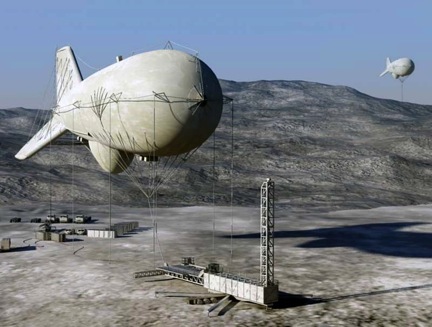6/1/12: by Ed Timperlake
In a case of Just DON’T do it, the USAF charges backwards.
For the USAF acquisition team which can not buy 12 Super Tucanos and get on with it, we have a new rumbling from the den of USAF acquisition.
In effect, USAF acquisition says: We can not do what that most innovative of acquisition teams — the US Army — can do.
To give full credit where credit is due during a very tragic time in American History, our Civil War, military leaders forged at West Point invented modern war.
Credit Photo:
http://historyday.crf-usa.org/1725/hot_air_balloons_during_the_civi.htm
From General Robert E Lee, with Stonewall Jackson showing the value of agile maneuverability, to US Grant and Sherman seeing the war winning value of total war backed up by an industrial base, the brilliance of those men and many others echo from history.
Many technologies came to fruition in this time of testing. The telegraph was the Internet of it’s day. Rail lift enabled maneuver forces and kept them supplied. At sea, the Navy/Marine team was pioneering, ironclad warships, riverine warfare and littoral engagements along with a fleet capable of enforcing a blue water strategic blockades.
It was costly and sad on both sides, but it should also be a clear message to today’s potential foes: American’s can and will fight and sacrifice to the last measure.
One of the more innovative techniques developed was Civil War ISR, from tethered blimps that could give the Battle Commanders a new and unique way to visualize the battlefield.
The Union and the Confederate armies both used Hot Air Balloons for spying during the Civil War.
Now flash forward to 2012. Airborne ISR is once again in vogue, and now the challenge is getting past the dominance of UAV-centric thinking about airborne ISR of the past decade.
And, once gain, the balloon and its derivative, the dirigible, have returned to a place in the evolution of future military history.
But even though the USAF was born sometime between the Civil War and now, the US Army appears to have remembered their Civil War origins, whereas the USAF seems fixated on the past decade.
What is pictured below is what is affectionally called JLENS.
Credit Photo: Raytehon
JLENS is a missile defense system that uses two integrated radar systems.
The first is a surveillance radar that identifies targets on land, on the sea and in the air.
The second is a fire control radar that integrates with existing missile systems to track and shoot down hostile cruise missiles, unmanned aerials and low-altitude aircraft.
The good news is that JLENS works.
The surveillance radar is practically a shelf-ready system and the fire control radar was successfully integrated with a Patriot missile shot that splashed a cruise missile during tests in Utah last month.
And: To date, DoD has invested roughly $1.6 billion in JLENS and taxpayers have gotten good value for that with a system that’s proved itself and is exceeding requirements.
http://www.sldforum.com/2012/05/bureaucracy-bogs-down-key-missile-defense-system/
So it was surprising when the Army is demonstrating success in reaching back to the concept of tethered balloons to solve a battle field requirement, the Air Force acquisition community is killing the same idea. Let us see: $1.6 billion versus $143 million and the USAF thinks this is too much! And in the USAF case, the new dirigible will actually fly and maneuver IN THE AIR while providing very high endurance ISR.
This is actually perplexing and rather bizarre.
USAF Lets The Air Out Of Blue Devil II Airship, May 24 2012
Amy Butler, Aviation Week:
Blue Devil II was originally envisioned as an airship capable of carrying 2,500 lb. of intelligence-collecting payload, including the Defense Advanced Research Projects Agency ’s Autonomous Real-Time Ground Ubiquitous Surveillance Imaging System (Argus), a version of which is optimized for use in Afghanistan on the A160T Hummingbird unmanned aircraft.
The Air Force also planned to put two separate Axsys video balls on the airship, capable of providing high-definition video feeds. The “Pennant Race” signals-intelligence collector, an upgraded version of a system that now flies on the Reaper, also was eyed for Blue Devil II, according to Air Force sources. “
“But in reality, the airship vision — at least for Blue Devil II — has fizzled like a slow leak in a balloon. The system’s cost has grown substantially. The price was originally pegged at $86 million, but service officials last year estimated it could cost double that amount to execute the original contract.
http://aerospaceblog.wordpress.com/2012/05/26/usaf-lets-the-air-out-of-blue-devil-ii-airship/
It appears that the Air Force is canceling an innovative program that can actually fly and make obsolete the huge support network necessary for a lot of current ISR UAVs platforms in a permissive air environment.
The M1400 is A FLYING system that has huge cost effective ISR presence and sustainability.
Basing the arguments over “technical problems” is also confusing since blimps and Air Ships have been around since before World War II.
One worries that light support aircraft and new dirigibles are overly taxing for the USAF’s ability to buy and deploy basic capabilities.
Can’t get the technical details correct-well just look in the sky over a modern Sports stadium one week and then another event significant distances away the following week—and you will see a BLIMP.
I guess it is becoming more and more evident that the USAF is becoming the Cubical Acquisition Force—so sad and wrong.
What ever happened to the pure joy of creating “things” that actually fly; it is the heart and soul of Aim High.
Instead of embracing the future, and shaping innovation in the ISR enterprise what do we see: bring on the UAVs of the past decade!
http://www.sldforum.com/2012/05/welcome-to-the-u-s-cubical-acquisition-force/
For a look at the program which pushes the USAF to the future see



